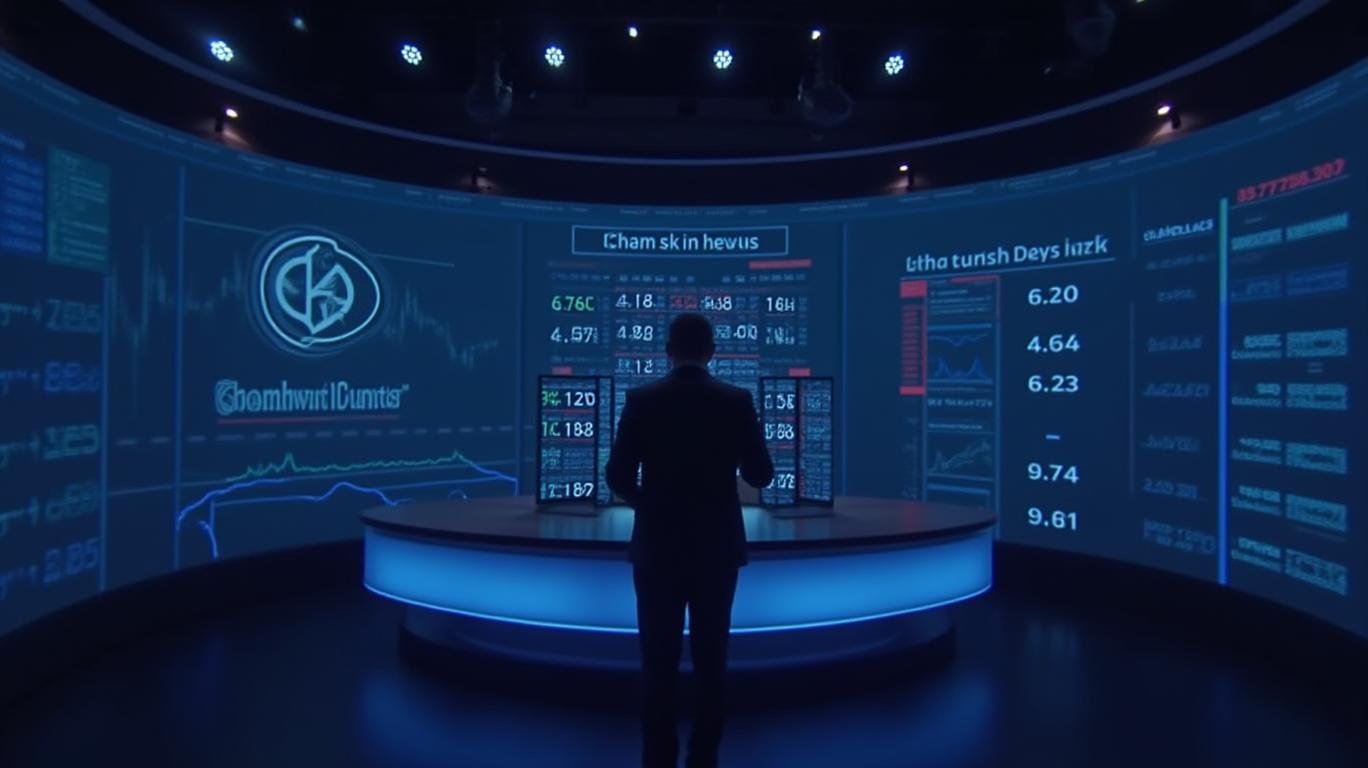Chainlink Faces 22% Drop Risk, Litecoin Sees 17% Monthly Decline Amid Crypto Volatility
Litecoin (LTC) and Chainlink (LINK) are currently experiencing significant price volatility, with analysts predicting further corrections before potential reversals. LINK's price has been declining, approaching the bottom of its megaphone pattern, which suggests an impending rebound. However, if the price falls below the critical level of $16.15, it could decline by 22%, potentially reaching $12.75. This scenario underscores the volatility and uncertainty surrounding LINK's price movements.
LTC is facing a similarly challenging situation. The recent drop in LINK's price trend has instilled fear in investors' minds, as the cryptocurrency continues to decline from its 52-week high. This downward spiral has reignited discussions about a possible trend reversal, with some observers questioning the sustainability of the current market conditions. The continuous investor accumulation may not have translated into a bullish reversal for LTC yet, but technical indicators suggest that a fresh relief rally could be on the horizon.
Over the past month, LINK has dropped by 29.37% and fell 13.19% in one week, while rebounding 19.55% over the past six months. The price fluctuations between $10.20 and $22.70 highlight a turbulent period marked by short-term losses and a gradual longer-term recovery. Historical moves suggest a market that has struggled recently but retained underlying strength over a half-year stretch. The current outlook centers on $5.58 as support and $30.59 as resistance, with a secondary barrier at $43.10. Negative indicators, including an Awesome Oscillator of -2.88 and Momentum at -4.51, hint at bearish pressure. No clear trend has emerged, so traders might consider range-bound strategies, buying near support while cautiously watching for any breakout or further decline.
LTC's price movements over the past month show a decline of roughly 17% with a weekly drop nearing 14%, while the half-year performance records a robust gain of over 41%. Price corrections have reflected short-term selling pressure amid overall upwards progression over the last six months. Historical swings exhibit typical altcoin volatility that sets the stage for upcoming market moves. Current prices trade between approximately 93 to 152 dollars. Bulls find resistance near 175 dollars and support holds around 57 dollars. Bears appear dominant in the short term with negative momentum and low RSI around 33, suggesting reactive trading. A possible strategy is to watch for rebounds within these levels for entry points aligned with broader bullish altcoin trends.
Recent price movements show LINK and LTC experiencing a downtrend. Both coins are likely to face further drops before any signs of recovery. Investors should monitor key support levels. This correction period may offer potential buying opportunities once stability returns. Keep an eye on market indicators for better timing.
The broader cryptocurrency market is also grappling with regulatory challenges. The recent bipartisan vote in the House of Representatives to reverse an IRS rule mandating cryptocurrency institutions to collect and report taxpayer and transaction information is a significant development. This move underscores the ongoing tug-of-war between regulators eager to bring crypto under stricter safeguards and lawmakers concerned about stifling innovation in the digital asset sector.
The IRS rule, which arose from provisions in the 2021 Infrastructure Investment and Jobs Act, aimed to strengthen reporting requirements on cryptocurrency transactions. However, critics argued that the policy would be too broad and negatively affect the digital asset ecosystem. The rule's backers, mostly from the Democratic Party, contended that the regulations were necessary to boost tax compliance and crack down on illegal financial activity. Despite the spirited opposition from Democrats, the resolution to roll back the rule passed with an overwhelming majority.
The repeal of the IRS rule is seen as a victory for crypto users, DeFi developers, and blockchain startups. If the resolution is signed into law, US-based crypto platforms will remain exempt from burdensome broker reporting requirements, easing compliance costs and administrative burdens. However, users will still need to report capital gains and losses on their crypto holdings to the IRS, and the agency is likely to pursue other means to increase tax compliance in the space.
The fight over the IRS's proposed crypto rule is part of a larger debate over how digital assets should be regulated. Key questions remain disputed, including how to enforce tax compliance without quelling innovation, where consumer protection should end, and financial privacy should begin. There are also questions over what role the United States should play in crafting global cryptocurrency regulations.
For now, the battle for crypto's rightful role in the financial system is just beginning. The Senate is set to vote soon on the resolution, and the administration is considering how to react. What's clear is that the future of cryptocurrency regulation is full of unknowns, and the outcome will have significant implications for the digital asset ecosystem.











